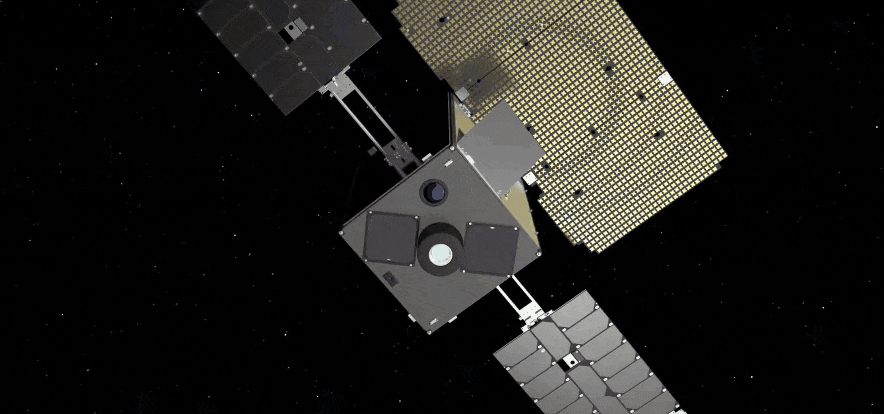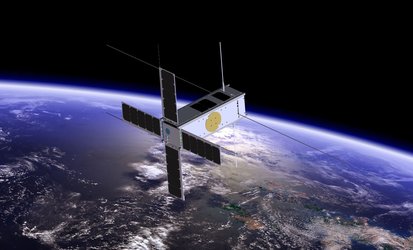Accept all cookies Accept only essential cookies See our Cookie Notice

About ESA
The European Space Agency (ESA) is Europe’s gateway to space. Its mission is to shape the development of Europe’s space capability and ensure that investment in space continues to deliver benefits to the citizens of Europe and the world.
Highlights
ESA - United space in Europe
This is ESA ESA facts Member States & Cooperating States Funding Director General Top management For Member State Delegations European vision European Space Policy ESA & EU Space Councils Responsibility & Sustainability Annual Report Calendar of meetings Corporate newsEstablishments & sites
ESA Headquarters ESA ESTEC ESA ESOC ESA ESRIN ESA EAC ESA ESAC Europe's Spaceport ESA ESEC ESA ECSAT Brussels Office Washington OfficeWorking with ESA
Business with ESA ESA Commercialisation Gateway Law at ESA Careers Cyber resilience at ESA IT at ESA Newsroom Partnerships Merchandising Licence Education Open Space Innovation Platform Integrity and Reporting Administrative Tribunal Health and SafetyMore about ESA
History ESA Historical Archives Exhibitions Publications Art & Culture ESA Merchandise Kids Diversity ESA Brand Centre ESA ChampionsLatest
Space in Member States
Find out more about space activities in our 23 Member States, and understand how ESA works together with their national agencies, institutions and organisations.
Science & Exploration
Exploring our Solar System and unlocking the secrets of the Universe
Go to topicAstronauts
Missions
Juice Euclid Webb Solar Orbiter BepiColombo Gaia ExoMars Cheops Exoplanet missions More missionsActivities
International Space Station Orion service module Gateway Concordia Caves & Pangaea BenefitsLatest
Space Safety
Protecting life and infrastructure on Earth and in orbit
Go to topicAsteroids
Asteroids and Planetary Defence Asteroid danger explained Flyeye telescope: asteroid detection Hera mission: asteroid deflection Near-Earth Object Coordination CentreSpace junk
About space debris Space debris by the numbers Space Environment Report In space refuelling, refurbishing and removingSafety from space
Clean Space ecodesign Zero Debris Technologies Space for Earth Supporting Sustainable DevelopmentLatest
Applications
Using space to benefit citizens and meet future challenges on Earth
Go to topicObserving the Earth
Observing the Earth Future EO Copernicus Meteorology Space for our climate Satellite missionsCommercialisation
ESA Commercialisation Gateway Open Space Innovation Platform Business Incubation ESA Space SolutionsLatest
Enabling & Support
Making space accessible and developing the technologies for the future
Go to topicBuilding missions
Space Engineering and Technology Test centre Laboratories Concurrent Design Facility Preparing for the future Shaping the Future Discovery and Preparation Advanced Concepts TeamSpace transportation
Space Transportation Ariane Vega Space Rider Future space transportation Boost! Europe's Spaceport Launches from Europe's Spaceport from 2012Latest

RACE double CubeSat mission
Thank you for liking
You have already liked this page, you can only like it once!
These twin briefcase-sized nanosatellites will manoeuvre around each other, before performing an automated docking in orbit.
The RACE, Rendezvous Autonomous CubeSats Experiment, is ESA’s latest in-orbit demonstration CubeSat mission, presented at this week’s CubeSat Industry Days, taking place at ESA’s technical heart.
CubeSats are low-cost satellites built up from standardised 10-cm boxes, increasingly used to demonstrate promising new technologies and approaches in space, as well as for educational, scientific and commercial applications.
The RACE mission concept involves two ‘6-unit’ CubeSats that will fly together in close formation, proving the capability of nanosatellites to perform close-proximity operations. These will include rendezvous and docking on a cooperative basis, and the ability to perform a close flyby around uncooperative targets, such as derelict satellites.
RACE is being developed by a European consortium led by the GomSpace company, with GMV working on guidance, navigation and control systems, Almatech contributing the docking mechanism and Micos the CubeSats’ visual navigation camera. The mission is being funded through ESA’s Fly element of the General Support Technology Programme, readying new concepts for space and the market.
“RACE will act as an in-orbit testbed for advanced guidance, navigation and control software and autonomous system behaviour,” explains Roger Walker, overseeing ESA’s technology CubeSats programme. “And by making it possible to assemble larger structures in space in this way, these ambitious CubeSats could open up many novel types of missions in future.”
ESA’s fourth CubeSat Industry Days take place this week at ESA’s ESTEC technical centre in Noordwijk, the Netherlands, with more than 260 participants from 25 European countries, representing some 152 companies.
“This event is focused on the current European state-of-the-art in this fast-expanding space sector and discussing key issues for future missions,” adds Roger. By popular demand these Industry Days have been expanded with an extra final day exploring CubeSat propulsion systems.
-
CREDIT
GomSpace -
LICENCE
ESA Standard Licence

Hera CubeSats’ touchdown

Getting CubeSats moving

M-Argo

PICASSO CubeSat















 Germany
Germany
 Austria
Austria
 Belgium
Belgium
 Denmark
Denmark
 Spain
Spain
 Estonia
Estonia
 Finland
Finland
 France
France
 Greece
Greece
 Hungary
Hungary
 Ireland
Ireland
 Italy
Italy
 Luxembourg
Luxembourg
 Norway
Norway
 The Netherlands
The Netherlands
 Poland
Poland
 Portugal
Portugal
 Czechia
Czechia
 Romania
Romania
 United Kingdom
United Kingdom
 Slovenia
Slovenia
 Sweden
Sweden
 Switzerland
Switzerland
























